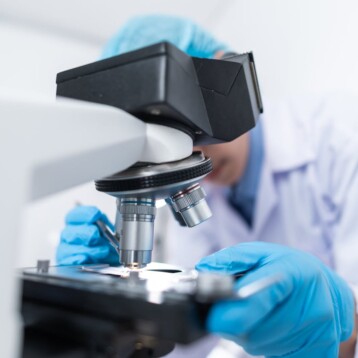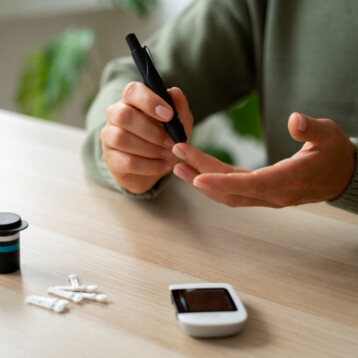|
Magnetic signals are used in various diagnostic and research fields. For example, MRI (Magnetic Resonance Imaging) is used for diagnostics and research of the human body, while MEG (Magnetoencephalography) is used mostly for diagnosing epilepsy and cognitive neuroscience research. In addition, the NMR (nuclear magnetic resonance spectroscopy) is used to study protein molecular structure. All these technologies make use of the different magnetic fields which exist all around us – in the human body, in the ground, and even in molecules such as proteins. The problem with these technologies is the accuracy/size trade-off. While devices with high measurement accuracy exist, they are costly, consume vast amounts of energy, and are usually very big and heavy (and therefore not portable). The current smaller, portable devices are not accurate enough for most diagnostic and research purposes.
John Kitching is working on the development of tiny magnetic sensors named atomic magnetometers. About the size of a grain of rice, these devices can actually compete with the existing large sensors in terms of measurement accuracy. The most sensitive big magnetometers can pick up magnetic fields at about one-fifty-billionth the strength of Earth’s magnetic field. Apparently, Kitching is getting close to achieving this level of accuracy with his tiny magnetic sensors.
|
The tiny device is made from three components on a silicone chip: a glass-and-silicon cube filled with vaporized cesium atoms (vapor cell), set between an off-the-shelf infrared laser, and an infrared photodetector. When no magnetic field is present, the laser light goes through the cesium atoms directly. When even the slightest magnetic field is detected, the atoms change their alignment, and absorb an amount of light proportional to the strength of the magnetic field. This change in illumination is identified and measured by the photodetector.
Kitching and his team created the vapor cells using micromachining techniques. First of all, they punched square holes three millimeters across into a silicon wafer, using a combination of lithography and chemical etching (the process of removing material-etching through the use of chemical activity). At this point they attach the silicone to a slip of glass by using heat and voltage, so the square hole became a topless ‘box’ with a glass bottom. Then, they filled the box with vaporized cesium atoms and sealed it with another slip of glass. This was done in a vacuum to prevent the cesium from reacting with water and oxygen. Finally, they assembled the magnetometer by attaching the vapor cell, infrared laser, and photodetector, and passed a current through conductive tapes surrounding the device in order to produce enough heat to keep the cesium atoms vaporized.
The team is currently developing a technique for mass producing the tiny magnetometers. Kitching is working on carving out many of the components simultaneously, striving to lower the costs and raise production efficiency. Once mass production is made possible, the atomic magnetometers could have a wide variety of application. For instance, soldiers could use magnetometer arrays for finding unexploded bombs. MRI and NMR could be reduced in size as the new magnetometers need far less power. This could make the devices portable and cheaper, increasing the availability of the MRIs in hospitals and even in ambulances, and enhancing the diagnostic capabilities of medical teams. According to Kitching, there is still a lot of work to be done on the subject, especially in regard with result interpretation.
TFOT has covered several other new developments in the field of neuroimaging. One of them is aLow-Intensity MRI Scan developed in the Los Alamos National Laboratory in New Mexico, which could lower the costs and dangers of the MRI. Another related TFOT article is about research conducted by scientists from the University of Illinois at Urbana-Champaign. The scientists developed a new computational image-forming technique for optical microscopy, called “ISAM”, which may improve the ability of producing three-dimensional images even from out-of-focus data. More recently, TFOT has brought you the story of the World’s strongest MRI positioned at the University of Illinois in Chicago (UIC).
More information on the atomic magnetometers can be found here.












